There are a lot of beautiful plants in the world. Some have medicinal purposes, others are edible, and there are those that are purely decorative. There are also many plants that are dangerously poisonous, “look, don’t touch” garden beauties. So what about planting a poison garden dedicated solely to them?
While doing some recent research on a mysterious plant that suddenly appeared in my garden, I stumbled across information about a poison garden. In fact, I found more than one in the world, but the one in England, at Alnwick Castle, and the one in Ireland at Blarney Castle, are the best known.
I’d never heard of such a thing. Fascinated, I scrolled through the information in hopes of discovering my mysterious plant. I didn’t — not right away. But I certainly learned a lot about hemlock, strychnine, nightshade, and about a hundred other killers (not that I would purposely grow them).
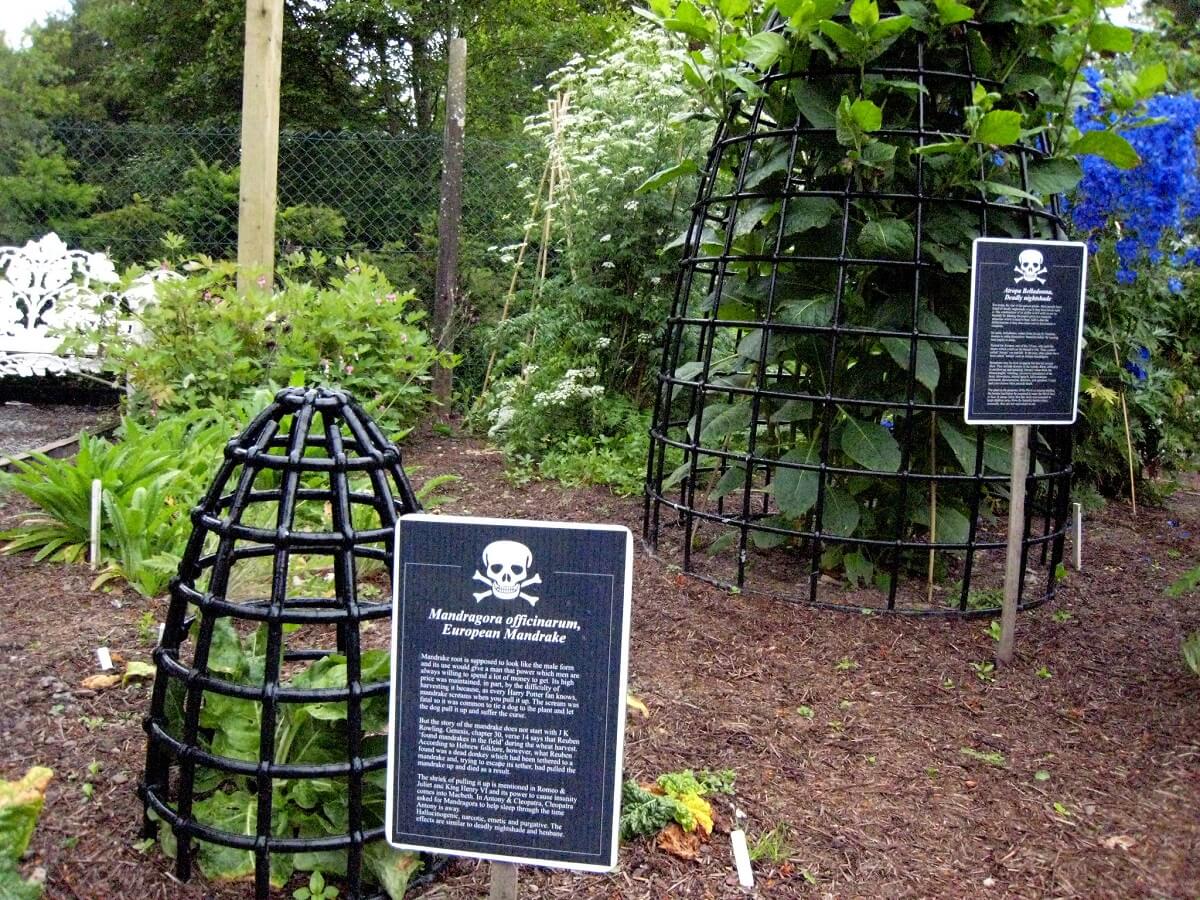
It got me thinking about my own garden and what was edible and what wasn’t. But deadly? I knew the leaves of a rhubarb plant were poisonous, and other plants like forget-me-nots had lethal qualities to them. Many of the popular garden flowers were toxic (some more than others), but an entire poison garden dedicated to the most toxic plants in the world? Wow!
Related Post: Homestead Stories: Great Grandpa’s Rhubarb
I started taking inventory of all the beautiful plants in my garden, and what was actually poisonous. In addition to the rhubarb leaves and forget-me-nots mentioned above, my garden was home to several toxic varieties.
- Bleeding hearts – poisonous, can cause skin rashes
- Delphinium – toxic to both animals and humans
- Pussy willow – the bark is used to make drugs like aspirin but toxic to small animals and can be toxic to humans as well
- Lilies – some can be deadly
- Holly – the berries aren’t poisonous to birds, but they are to humans
- Ivy – some are particularly toxic (and can be deadly) to humans, and poison ivy, of course, causes skin rashes
- Rudbeckia – some, like dark-eyed Susans, are considered mildly toxic and can cause stomach upsets
I’m sure there are others, but since my goal in gardening (other than veggies and herbs) is to create a thing of beauty and resilience, the level of toxicity isn’t an issue. There is nothing illegal about growing poisonous plants.
Related Post: Dephilium Flowers: Beautiful but Poisonous
On the other hand, there are some pretty deadly plants in the world, and to think there are gardens that specialize in these extremely toxic plants is a little frightening.
I watched a video interview of the head gardener and what shocked me was the fact he wore a hazmat-type suit, complete with a face mask, when working in the garden.
When you’re dealing with plants like strychnine, hemlock, nightshade, and many other deadly plants, it’s understandable. But the gardening wardrobe certainly hit the point home, as did the signs at the locked gate and throughout the garden that warns visitors:
These plants can kill.
Do not touch.
Do not smell.
And, of course:
Do not taste.
In other words, admire but only look, and don’t touch. With a collection of over 100 of the deadliest plants in the world, the poison section is secured and separated from the rest of the garden with strong iron fencing and iron gates bearing the symbols of lethal and hazardous material: a skull and crossbones sign.
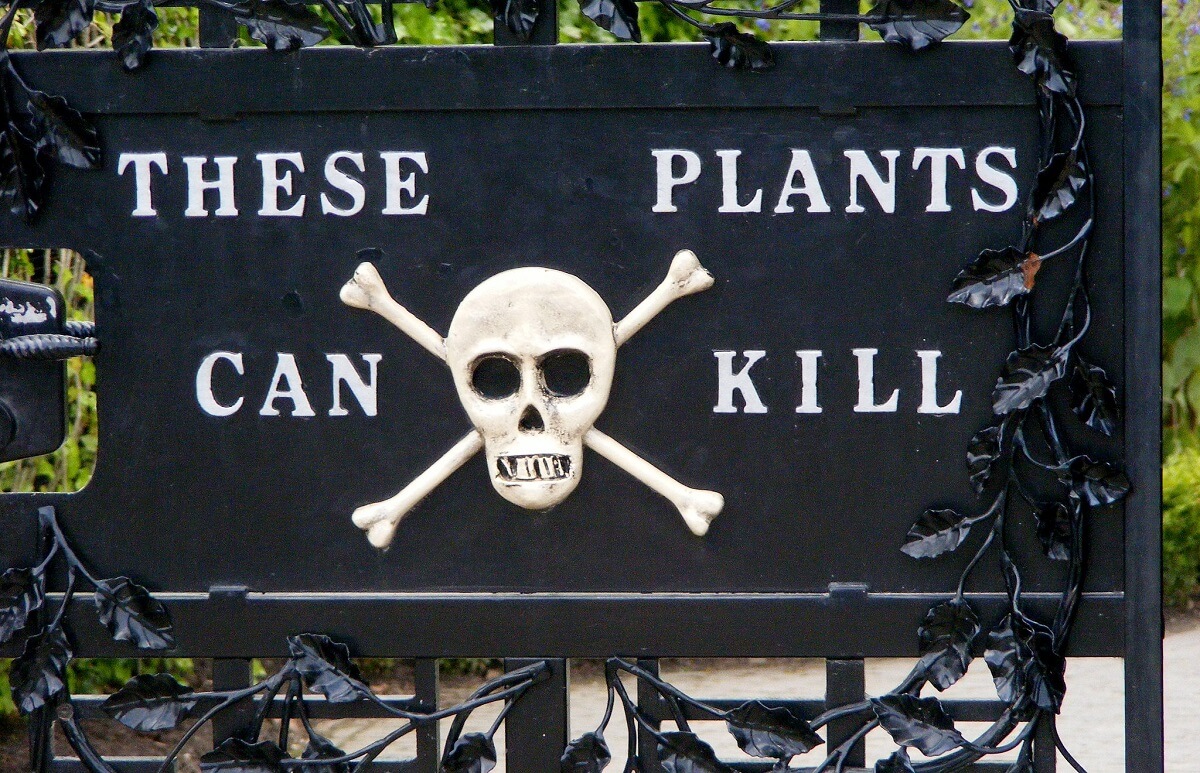
As well as the numerous warning signs, some of the most toxic plants that can kill by merely touching the plant, are caged for safety precautions. On top of all that signage, the garden is heavily guarded. Enter at your own risk and be mindful of safety precautions.
Common Plants Found In Poison Gardens
So, what does one find in the Poison Garden? When Jane Percy, the current Duchess of Northumberland, was tasked with redesigning the gardens at Alnwick in the 1990s, she was inspired by the historic Medici garden of poisonous plants in the Padua Botanical Garden in Italy. Many of these plants are unique in their beauty but — if one goes on looks alone — can be dangerous.
Of the many deadly plants in the garden, perhaps the better known include strychnine, hemlock, and nightshade.
Strychnine Tree
Strychnine is well known for its highly toxic seed that is colorless, bitter and particularly deadly. It’s a crystalline alkaloid that is often used in pesticides, especially for killing small animals like birds and rodents. Inhaled, swallowed, or exposed to the eyes and mouth, it will cause convulsions and death by asphyxiation. It might be deadly, but there are some medicinal uses for strychnine in small doses, like treating some cancers and heart disease.
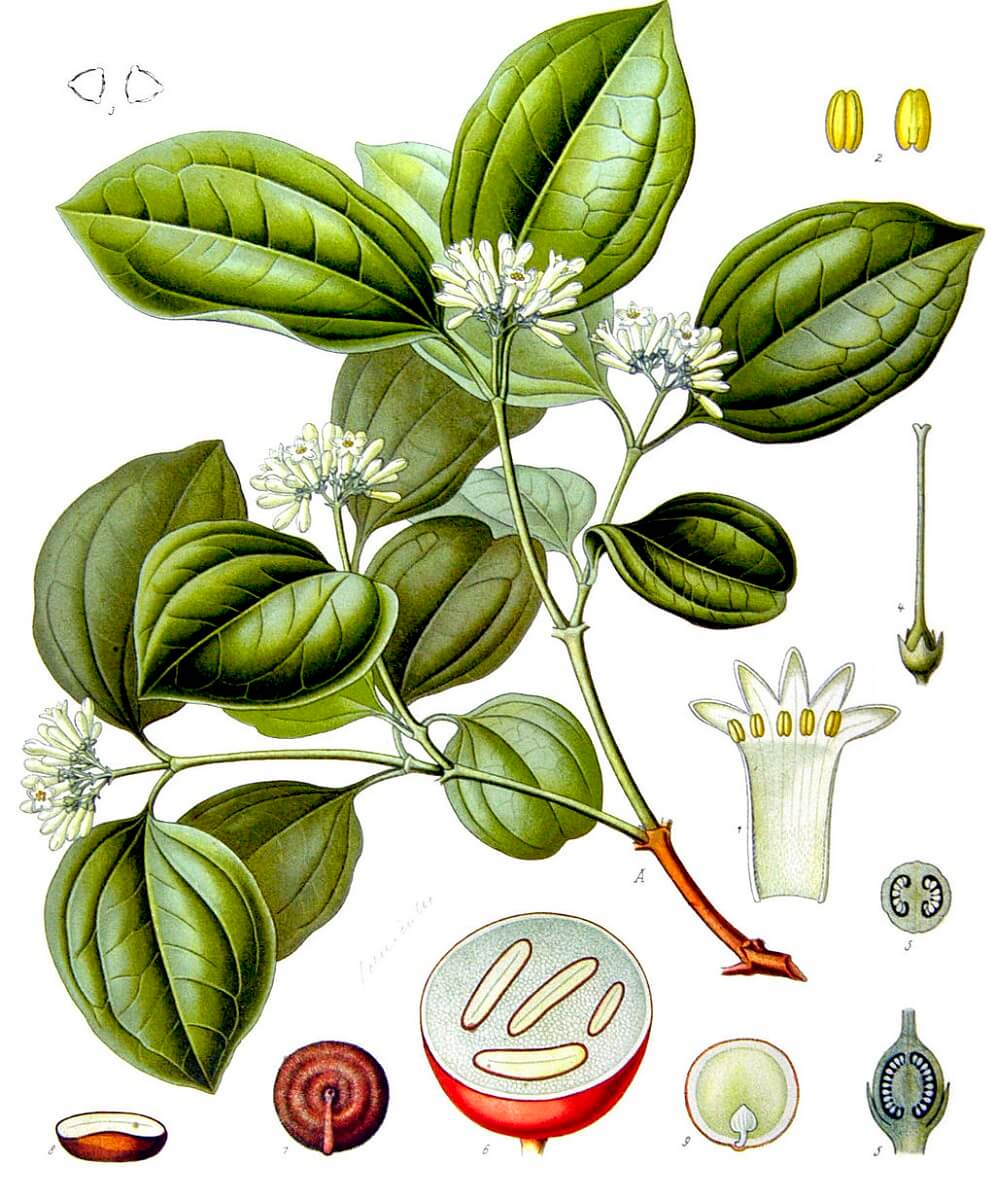
What does it look like? At first glance, the medium-sized evergreen strychnine tree looks much like a holly tree or shrub with its waxy green leaves and bright red berries. Holly berries can be toxic, too, but the similarities end there.
The strychnine tree has a thick, white crooked trunk with irregular branches covered with smooth, pale gray bark. The leaves are slightly oval-shaped and grow in pairs on either side of the branches. Among the leaves are green or white clusters, and tubular and rather foul-smelling flowers that mature into red berries. Although the entire plant is poisonous, it’s the smooth, hard-shelled berries and jelly-like pulp that protect the seeds that yield the poison.
Hemlock
Hemlock looks very much like the invasive and toxic plant, wild parsnip. Not surprising, since they both belong to the carrot family Apiaceae, and both are native to Europe and North Africa. Hemlock is known by many different names, including British hemlock, Australian carrot fern, Irish devil’s bread, devil’s porridge, poison parsley, and poison hemlock.
Historically, it’s known as the plant that killed Theramenes, Socrates, and Phocion. In fact, it was used to execute condemned prisoners in ancient Greece. Suffice it to say, the plant is extremely poisonous.
All parts of the plant are toxic, most significantly in the spring during the early stages of growth. Humans can die from ingesting any part of the plant, or from eating game that has fed on the toxic hemlock seeds. Although it bears similarities to other toxic plants, it is much more deadly than its look-alike, wild parsnip — which can cause serious burns from the plant’s sap.
Related Post: Queen Anne’s Lace
People have died by mistakenly ingesting hemlock, believing the seeds to be anise, the roots to be parsnips, or the leaves to be parsley. Know what you’re harvesting before you use it in any way, shape or form.
Nightshade
And then there’s the deadly nightshade. Its flower is beautiful, but there can easily be danger in beauty. Surprisingly, it’s part of the Solanaceae family which includes tomatoes, potatoes, and eggplant.
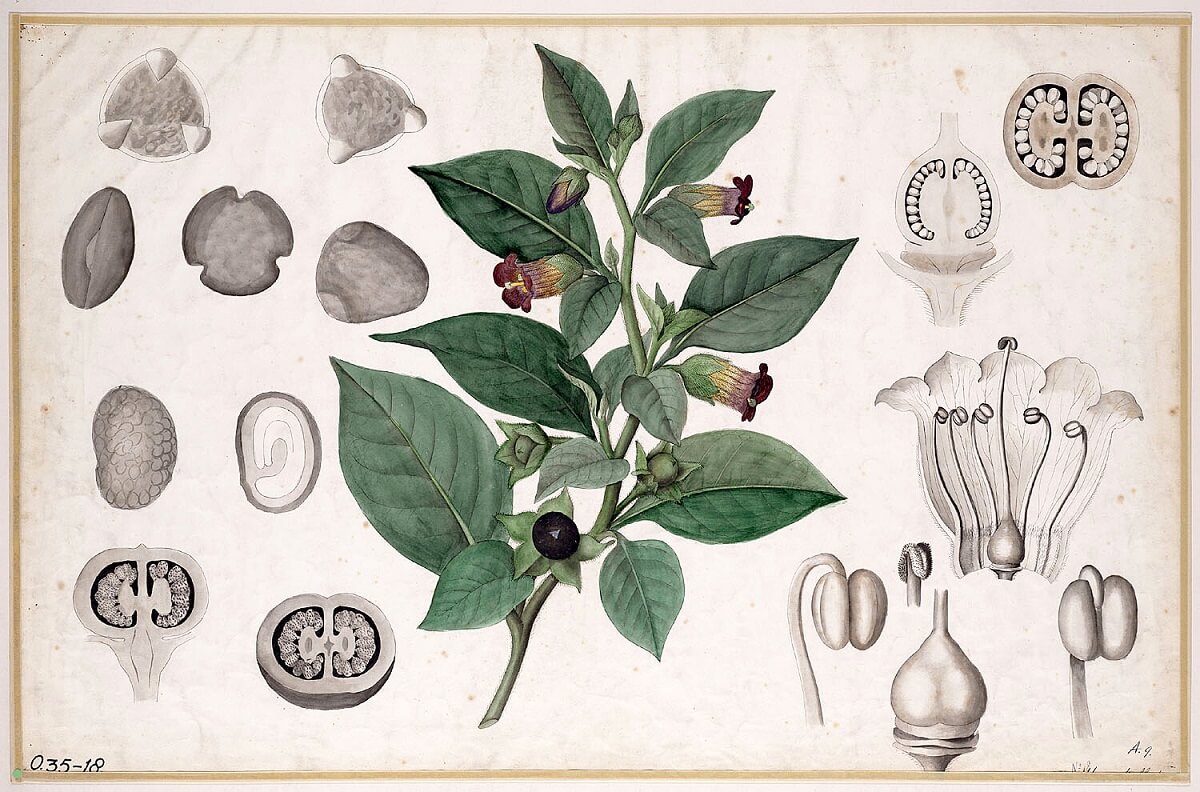
However, the foliage, flowers, and berries are extremely toxic due to its tropane alkaloids: atropine, scopolamine, and hyoscyamine. Used in the Middle Ages as an anesthetic during surgery, in small doses it causes delirium and hallucinations. In larger doses, ingestion can lead to death.
Nicandra
Nicandra, also known as the apple of Peru or the shoo-fly plant, is related to the deadly nightshade. With violet and white, bell-shaped flowers, the plant itself can reach a height of close to 3 feet.
Although the plant blooms from summer through autumn, the flowers are short-lived, only lasting a day. The seeds, however, hang from the plant for a considerably longer period of time. The plant is both medicinal and toxic with conflicting reports for its success.
Brugmansia Plant
The Brugmansia, or angel trumpet plant (also part of the Solanaceae family), is a woody tree or shrub with large, pendulous flowers shaped like trumpets. The flowers are fragrant but deadly, giving the person smelling the flower a psychedelic sensation before killing them.
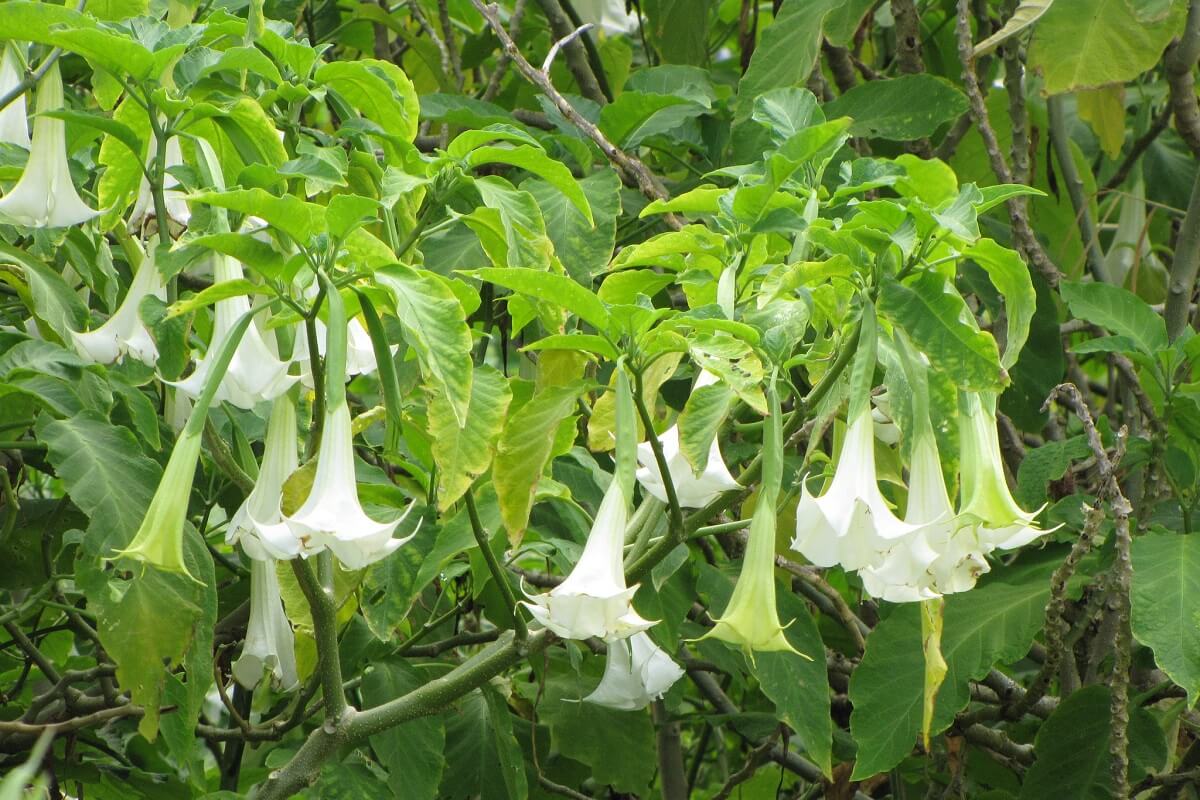
It was so popular in the Victorian era that ladies would sprinkle its pollen in their tea, enjoying the high it created without realizing the impending danger. The death this plant can cause is anything but pleasant including sweat-soaked convulsions and foaming at the mouth.
Laurel Bushes
Laurel bushes are a flowering, broadleaf evergreen. Many varieties grow wild just about everywhere, and produce toxic fumes that can cause a person to pass out and die. In spite of the posted warnings at Alnwick, people do succumb to the toxic fumes and have to be given immediate medical attention.
Calla Lily
The beautiful calla lily is poisonous, though people do attempt to cook out the toxins and eat the leaves.
Castor Oil Plant
And then there’s the castor oil plant with its deadly, ricin-laced seeds. All parts of the plant are poisonous, and the symptoms include local irritation, a burning sensation in the mouth, vomiting, and diarrhea. As with the calla lily, some people cook the leaves to eat without adverse effects.
With over 100 poisonous species, Alnwick’s Poison Garden (considered the deadliest garden in the world) and similar gardens around the world provide a safe and natural environment to appreciate both the beauty and the dangers of gardening. The best advice for any gardener, novice or experienced, is to be aware of what you’re growing, what you’re harvesting, and what you use for personal benefits.
Bottom line: Gardeners seeking medicinal and culinary novelties beware. And, if you do decide to visit one of these fascinating poison gardens, heed the warning signs! The gardeners aren’t kidding. Their plants can (and do) kill.





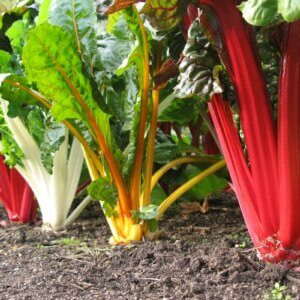

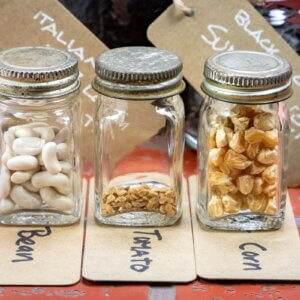








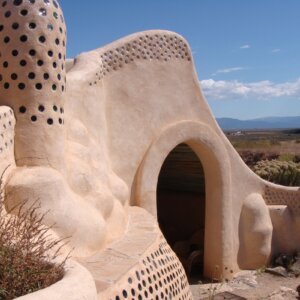

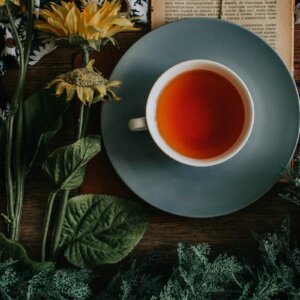




















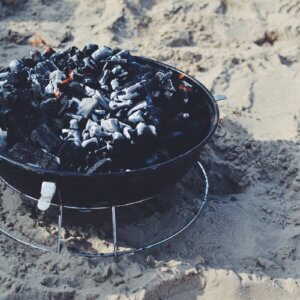


Leave a Reply